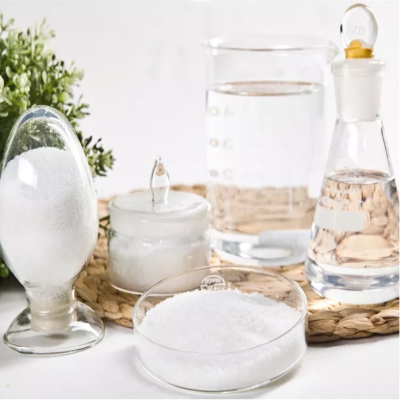-
Categories
-
Pharmaceutical Intermediates
-
Active Pharmaceutical Ingredients
-
Food Additives
- Industrial Coatings
- Agrochemicals
- Dyes and Pigments
- Surfactant
- Flavors and Fragrances
- Chemical Reagents
- Catalyst and Auxiliary
- Natural Products
- Inorganic Chemistry
-
Organic Chemistry
-
Biochemical Engineering
- Analytical Chemistry
- Cosmetic Ingredient
-
Pharmaceutical Intermediates
Promotion
ECHEMI Mall
Wholesale
Weekly Price
Exhibition
News
-
Trade Service
Since 2015, the NDRC has accelerated price reform, actively and flexibly used price leverage, and steadily and orderly launched a series of price policy measures, achieving remarkable results
in stimulating market vitality, promoting structural adjustment, reducing enterprise costs, and optimizing the price environment.
It is reported that the focus of the next price reform is to deepen the price reform in the fields of electricity, natural gas, medical services, and transportation; reform of environmental tariff subsidies; Implement progressive tariff increases for water used in excess of quotas; Accelerate the construction of
price informatization.
Specifically, there are the following four major measures
.
The first is to stimulate market vitality
.
There are mainly the following six points: (1) It is to liberalize more than 40 government pricing such as most drugs, most professional services, and transportation and postal services in some competitive fields, and the pricing items of central and local governments will be reduced by 80% and 55% respectively
.
(2) It is the first to launch the pilot of transmission and distribution price reform in Shenzhen, and expand the pilot scope to 18 provincial power grids such as Anhui, Hubei, Ningxia, Yunnan and Guizhou and regional power grids
in North China.
(3) It is to further improve the refined oil price formation mechanism, set the lower limit of price regulation, simplify the operation mode of price adjustment, and liberalize the ex-factory price
of liquefied petroleum gas.
(4) It is to realize the integration of non-residential stock gas and incremental gas prices, and comprehensively rationalize non-residential gas prices
.
(5) It is to summarize the pilot experience of 80 counties in 27 provinces and further promote the pilot
project of comprehensive reform of agricultural water prices.
(6) It is a pilot
project to steadily advance the target price reform of cotton and soybeans.
(7) It is to rationalize the national railway freight price in accordance with the principle of maintaining a reasonable price comparison relationship with road freight, and establish a freight rate fluctuation mechanism
.
Second, promote structural adjustment
.
(1) It is to implement differential electricity prices for high-energy-consuming industries such as calcium carbide and ferroalloy, and implement tiered electricity prices
based on electricity consumption level standards for cement and electrolytic aluminum production enterprises.
(2) It is to implement the on-grid tariff support policy for ultra-low emissions of coal-fired power plants, promote the clean and efficient use of coal, and promote energy conservation, emission reduction and air pollution control
.
(3) It is to use the on-grid tariff of coal-fired units to reduce the space and improve the additional standards
for renewable energy.
(4) It is to guide local governments to reasonably formulate and adjust sewage treatment charging standards
.
(5) It is to guide local governments to reasonably formulate the collection standards for volatile organic compounds (VOCs) in pilot industries such as petrochemical industry, packaging and printing, and gradually adjust them to a level
that is basically equivalent to the pollution discharge fees of major pollutants in the atmosphere.
The third is to reduce the cost
of enterprises.
(1) In April 2015, the on-grid electricity price and industrial and commercial sales electricity price were reduced by an average of about 2 cents and 1.
8 cents per kWh, and in January 2016, the on-grid electricity price and general industrial and commercial electricity prices were further reduced by about 3 cents, reducing the burden of industrial and commercial enterprises by about 90 billion yuan
.
(2) It is to significantly reduce the price of
oil and gas.
In November 2015, the price of non-residential natural gas gate stations was significantly reduced by 0.
7 yuan per cubic meter, directly reducing the downstream burden by more than
43 billion yuan per year.
In 2015, the maximum retail prices of domestic gasoline and diesel were adjusted 19 times (12 to 7 liters), which were 670 yuan and 345 yuan per ton respectively compared with the beginning of the year, reducing the burden of the oil industry by more than
120 billion yuan.
(3) It is to improve the pricing mechanism of bank card charges, and clarify that the rate level will be significantly reduced since September 2016, which can reduce the cost of commercial and trade circulation enterprises by about 7.
4 billion yuan per year.
(4) It is to carry out the cleaning up of import and export fees, clean up the seven administrative fees involving shipping enterprise fees along the Yangtze River, China-Europe class entry fees, cancel ship port fees, improve the policy of charging ship fees and port facility security fees, and introduce a new "Port Fee Billing Measures"
.
The introduction of these policies and measures can reduce the burden of relevant enterprises by about 7 billion yuan per year, further enhance the transparency of fees, and clearly standardize
the order of fees.
(5) Further clean up and standardize administrative fees, reduce 12 fee standards in 6 departments, and reduce the annual reduction amount to 4 billion yuan
.
The fourth is to optimize the price environment
.
(1) Clean up the service charges
for administrative approval.
(2) It is to realize inventory management
of all administrative fees and government pricing business service charges.
(3) The fee permit system will be abolished from January 2016 to simplify the management process
.
(4) It is to deploy a comprehensive clean-up and standardize administrative examination and approval of intermediary service charges, promote the market-oriented reform of intermediary service charges, strictly set up administrative examination and approval intermediary service fee items that are set by the government or included in the management of administrative fees, and strictly approve the fee standards
.
(5) It is to carry out a one-year special rectification work on ticket prices, further standardize ticket price behavior, and maintain normal price order
.







